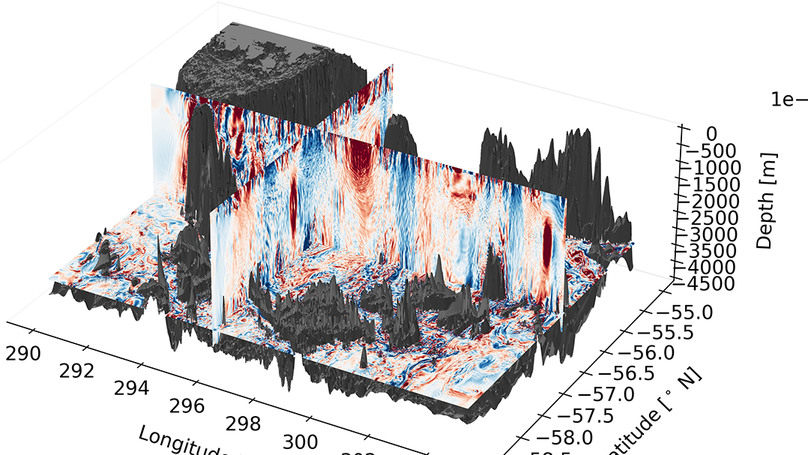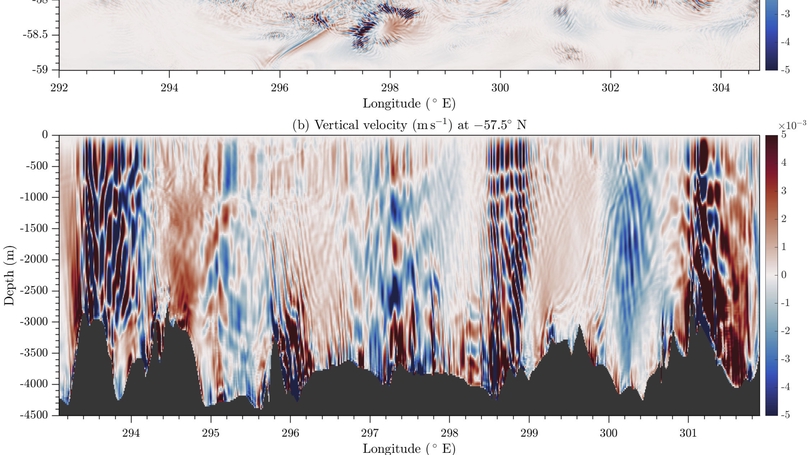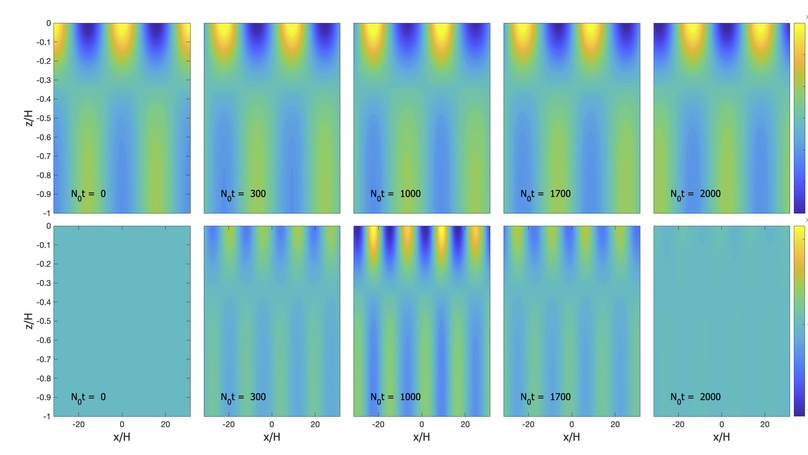Publications
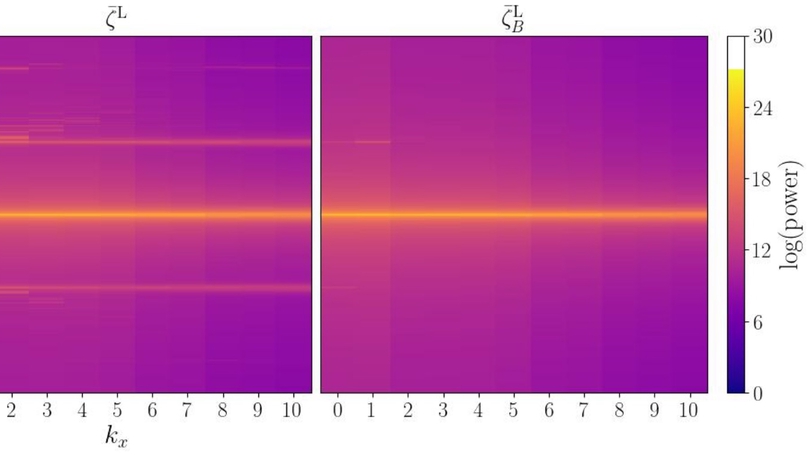
Lagrangian averaging is a valuable tool for the analysis and modeling of multiscale processes in fluid dynamics. The numerical computation of Lagrangian (time) averages from simulation data is challenging, however. It can be carried out by tracking a large number of particles or, following a recent approach, by solving a dedicated set of partial differential equations (PDEs). Both approaches are computationally demanding because they require an entirely new computation for each time at which the Lagrangian mean fields are desired. We overcome this drawback by developing a PDE-based method that delivers Lagrangian mean fields for all times through the single solution of evolutionary PDEs. This allows for an on-the-fly implementation, in which Lagrangian averages are computed along with the dynamical variables. This is made possible by the use of a special class of temporal filters whose kernels are sums of exponential functions. We focus on two specific kernels involving one and two exponential functions. We implement these in the rotating shallow-water model and demonstrate their effectiveness at filtering out large-amplitude Poincaré waves while retaining the salient features of an underlying slowly evolving turbulent flow.

Geophysical flows are typically composed of wave and mean motions with a wide range of overlapping temporal scales, making separation between the two types of motion in wave-resolving numerical simulations challenging. Lagrangian filtering – whereby a temporal filter is applied in the frame of the flow – is an effective way to overcome this challenge, allowing clean separation of waves from mean flow based on frequency separation in a Lagrangian frame. Previous implementations of Lagrangian filtering have used particle tracking approaches, which are subject to large memory requirements or difficulties with particle clustering. Kafiabad & Vanneste (2023) recently proposed a novel method for finding Lagrangian means without particle tracking by solving a set of partial differential equations alongside the governing equations of the flow. In this work, we adapt the approach of KV23 to develop a flexible, on-the-fly, PDE-based method for Lagrangian filtering using arbitrary convolutional filters. We present several different wave–mean decompositions, demonstrating that our Lagrangian methods are capable of recovering a clean wave-field from a nonlinear simulation of geostrophic turbulence interacting with Poincar{'e} waves.
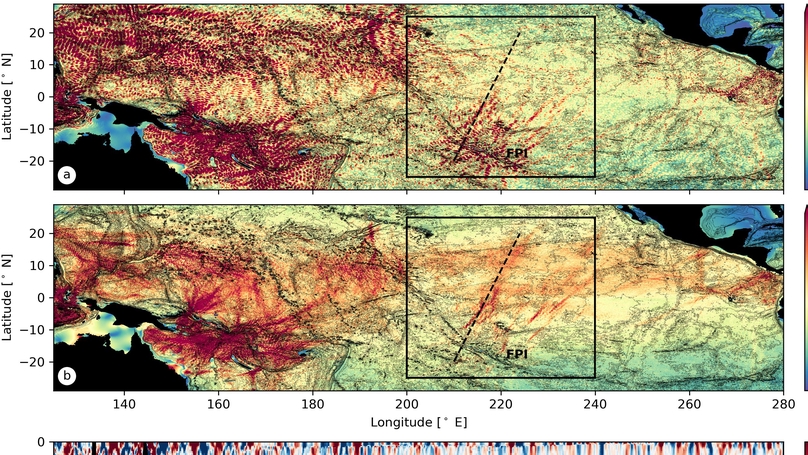
Internal tides are generated in the stratified ocean interior by the interaction of barotropic tidal currents with rough bathymetry. Low-vertical-mode internal tides can transport energy far from their generation site, but it remains unclear how and where this energy is eventually dissipated at small scales. A potential mechanism for the transfer of energy from low-mode internal tides to smaller scales in equatorial regions is superharmonic generation, whereby nonlinear self-interaction of internal tides in non-uniform stratification excites waves with shorter wavelengths and higher frequencies. Here, we use a realistically forced global configuration of the Massachusetts Institute of Technology general circulation model to investigate an enhanced superharmonic signal in the equatorial Pacific Ocean. Using existing theory, we demonstrate that the superharmonic amplitude is consistent with nonlinear self-interaction of the original baroclinic tide, providing strong evidence for an energy pathway from the mode-1 semidiurnal internal tide to smaller horizontal scales.
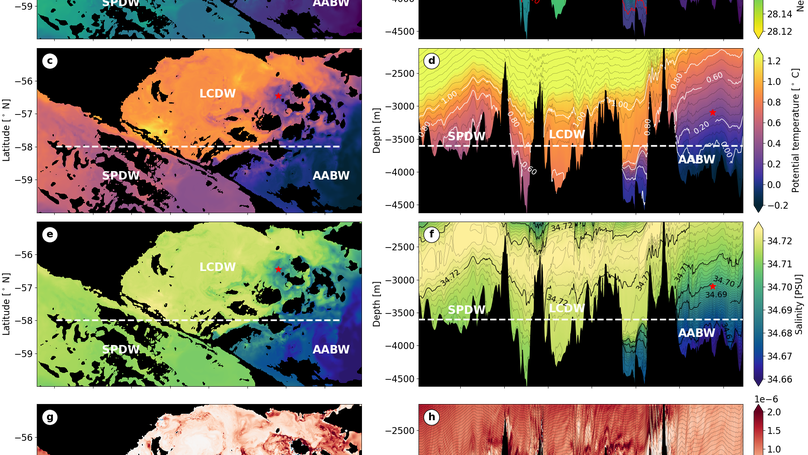
The lower cell of the meridional overturning circulation (MOC) is sourced by dense Antarctic Bottom Waters (AABWs), which form and sink around Antarctica and subsequently fill the abyssal ocean. For the MOC to “overturn,” these dense waters must upwell via mixing with lighter waters above. Here, we investigate the processes underpinning such mixing, and the resulting water mass transformation, using an observationally forced, high-resolution numerical model of the Drake Passage in the Southern Ocean. In the Drake Passage, the mixing of dense AABW formed in the Weddell Sea with lighter deep waters transported from the Pacific Ocean by the Antarctic Circumpolar Current is catalyzed by energetic flows impinging on rough topography. We find that multiple topographic interaction processes facilitate the mixing of the two water masses, ultimately resulting in the upwelling of waters with neutral density greater than 28.19 kg m$^{-3}$, and the downwelling of the lighter waters above. In particular, we identify the role of sharp density interfaces between AABW and overlying waters and find that the dynamics of the interfaces’ interaction with topography can modify many of the processes that generate mixing. Such sharp interfaces between water masses have been observed in several parts of the global ocean, but are unresolved and unrepresented in climate-scale ocean models. We suggest that they are likely to play an important role in abyssal dynamics and mixing, and therefore require further exploration.
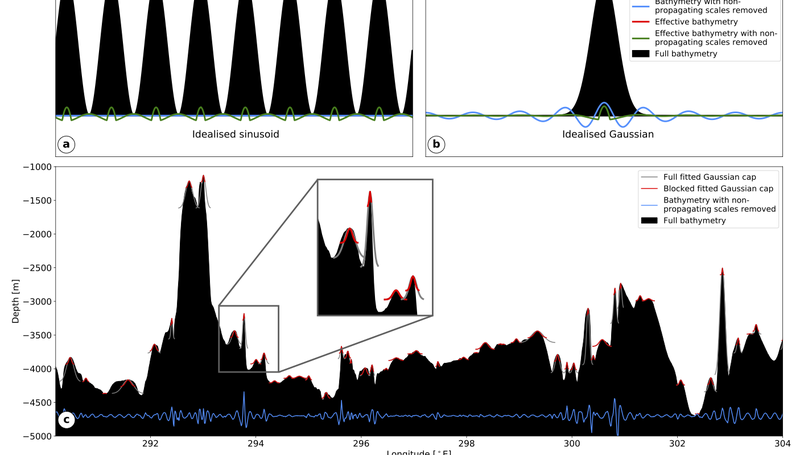
Oceanic lee waves are generated when quasi-steady flows interact with rough topography at the bottom of the ocean, providing an important sink of energy and momentum from the mean flow and a source of turbulent kinetic energy. Linear theory with a spectral representation of topography is typically used to inform parameterisations of lee wave generation. Here, we use a realistic wave resolving simulation of the Drake Passage, a hot-spot of lee wave generation, to investigate the utility of such parameterisations for areas of complex large scale topography. The flow is often blocked and split by large amplitude topographic features, creating an ’effective topography’, and calling into question the spectral representation of small scale topography for lee wave generation. By comparing the resolved modelled wave field to parameterisations employing various representations of topography, we show that spectral methods may not be appropriate in areas of rough topography. We develop a simple topographic representation consisting of an ensemble of topographic peaks, which allows physical treatment of flow blocking at finite amplitude topography. This method allows better prediction of bottom vertical velocities and lee wave energy flux than spectral methods, and implies that the nature of lee waves in such regions can be misrepresented by a spectral approach to topographic representation. This leads to both an overestimate of wave energy flux and an underestimate of wave nonlinearity, with implications for the mechanisms by which lee waves break and mix in the abyssal ocean.
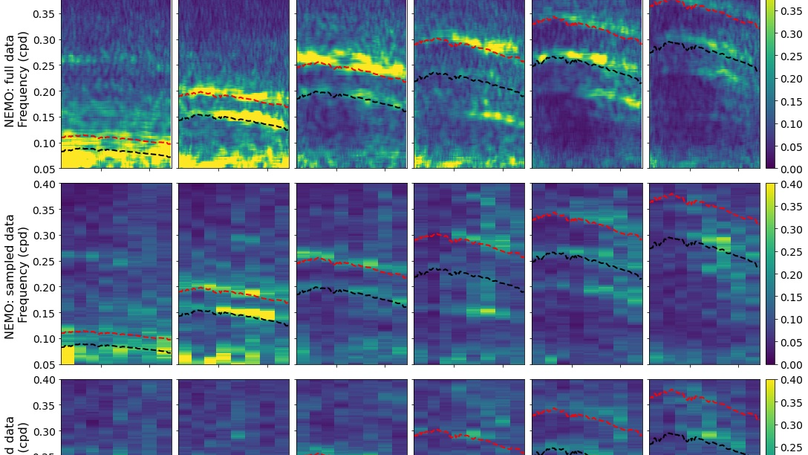
Large amplitude oscillations in the meridional overturning circulation (MOC) have been found near the equator in all major ocean basins in the NEMO ocean general circulation model. With periods of 3-15 days and amplitudes of ~ 100 Sv in the Pacific, these oscillations have been shown to correspond to zonally integrated equatorially trapped waves forced by winds within 10 degrees N/S of the equator. Observations of dynamic height from the Tropical Atmosphere Ocean (TAO) mooring array in the equatorial Pacific also exhibit spectral peaks consistent with the dispersion relation for equatorially trapped waves. Here, we revisit the TAO observations to confirm that the amplitude of the oscillations is consistent with the simulations, supporting the modelled large amplitude MOC oscillations. We also show that the zonal structure of the frequency spectrum in both observations and simulations is predicted by changes in the baroclinic wave speed with variation in stratification across the ocean basin.
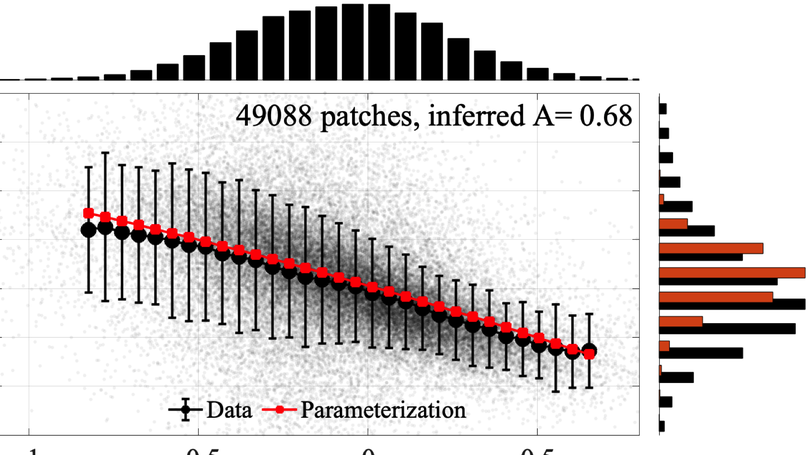
Turbulent mixing induced by breaking internal waves is key to the ocean circulation and global tracer budgets. While the classic marginal shear instability of Richardson number ∼1/4 has been considered as potentially relevant to turbulent wave breaking, its relevance to flows that are not steady parallel shear flows has been suspect. We show that shear instability is indeed relevant in the ocean interior and propose a new marginal stability paradigm that relates the stability criterion based on Richardson number to one based on the ratio of Ozmidov and Thorpe turbulence scales. The new paradigm applies to both ocean interior and boundary layer flows. This allows for accurate quantification of the transition from downwelling to upwelling zones in a recently emerged paradigm of ocean circulation. Our results help climate models more accurately calculate the mixing-driven deep ocean circulation and fluxes of tracers in the ocean interior.
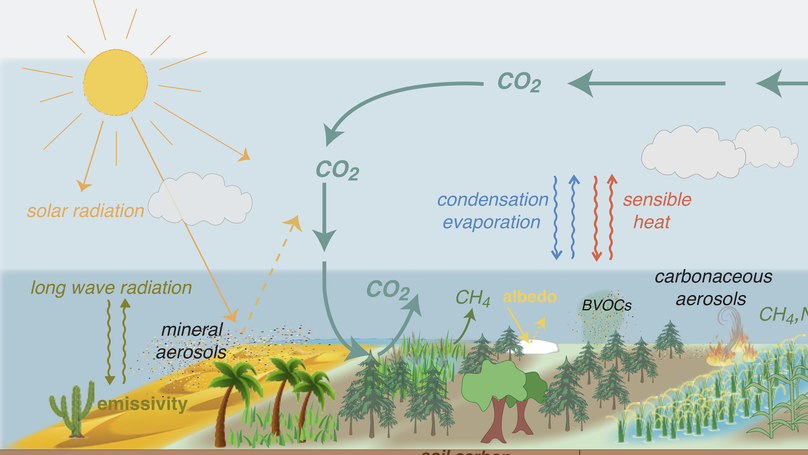
Co-hosted by the Grantham Institute, a Royal Meteorological Society meeting was held on 18 November 2019 to discuss climate change around the globe and the two recently released Intergovernmental Panel on Climate Change (IPCC) Special reports (SR) (IPCC, 2019a,b). The meeting’s presentations and panel discussions covered the current state of knowledge on climate change and the options for action.
